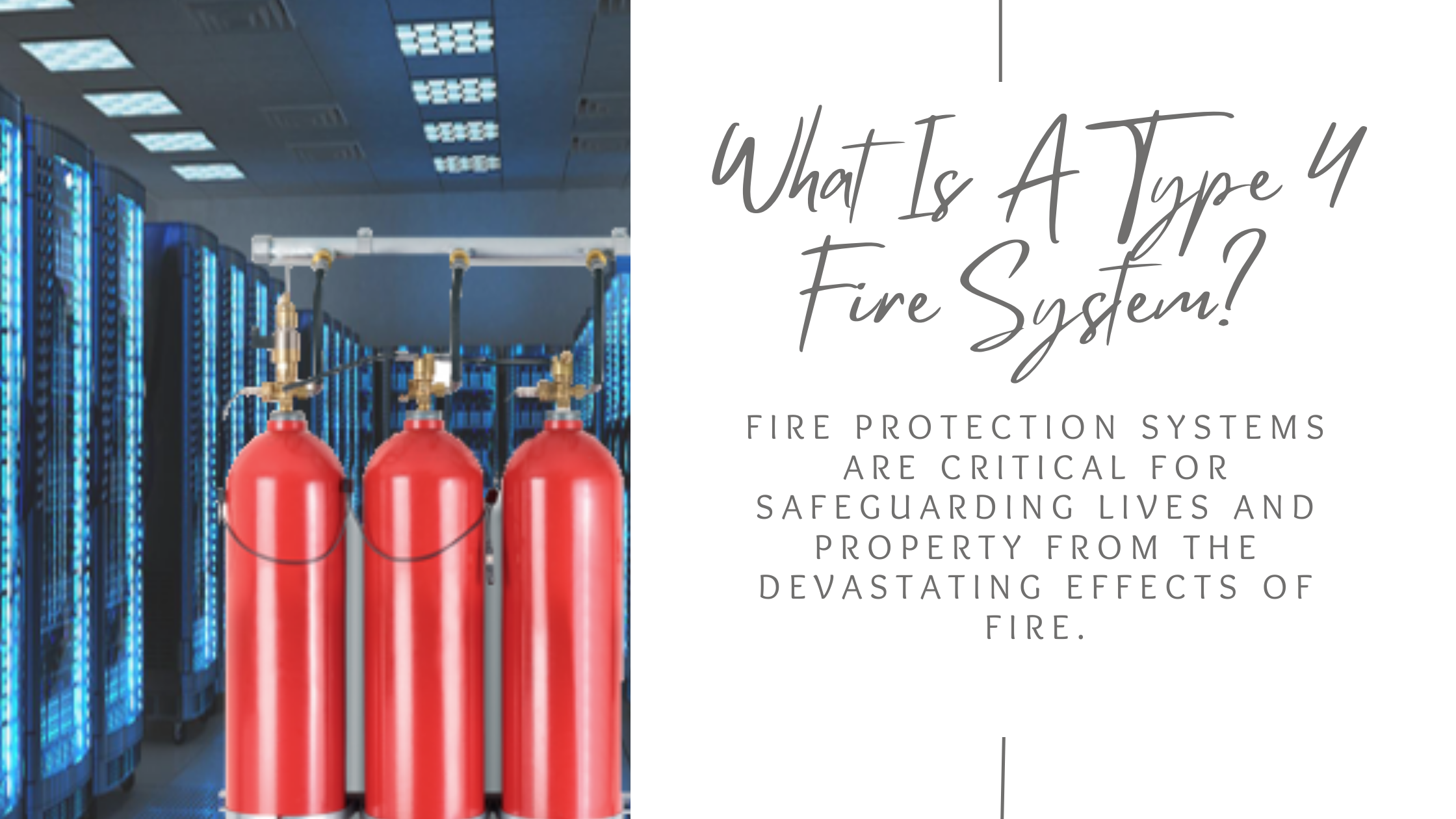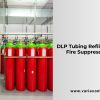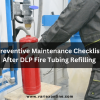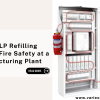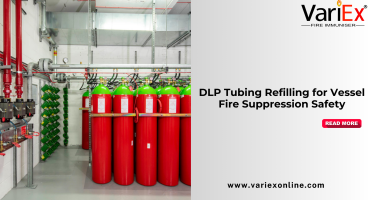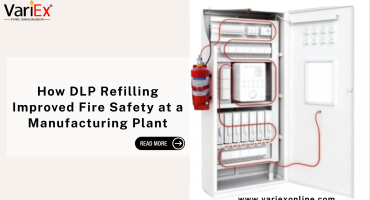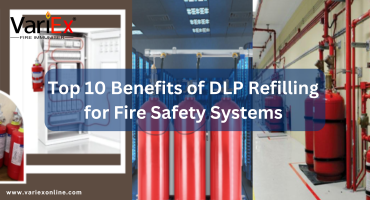Type 4 fire systems offer several advantages over traditional water-based systems. They are ideal for protecting sensitive equipment and environments where water can cause damage, such as in data centers, electrical rooms, and museums. Unlike water, clean agents and CO2 can suppress fires effectively without harming electronics or valuable assets, ensuring that the fire is extinguished while minimizing collateral damage. Additionally, Type 4 systems are often fully automated, ensuring a rapid response to fire emergencies.
![]()
Fire Immuniser
+91-7829629111
Email: info@variex.in
Varistor Technologies Pvt. Ltd.
Block-1, First Floor, Ardente Office One, Hoodi Circle, ITPL Main Road, Bengaluru, Karnataka 560048, IN
What Is A Type 4 Fire System
What Is A Type 4 Fire System
Fire protection systems are critical for safeguarding lives and property from the devastating effects of fire. Among the various types of fire suppression systems used in buildings, facilities, and industrial settings, Type 4 fire systems are particularly important in specialized environments. These systems are designed to effectively control fires in spaces where standard fire protection methods may not be sufficient. To understand what a Type 4 fire system is, it's essential to explore its features, components, applications, and how it differs from other fire protection systems.
Introduction to Fire Protection Systems
Fire protection systems are essential for minimizing damage caused by fire outbreaks and ensuring the safety of individuals in or near a fire-prone environment. There are several types of fire suppression systems, each designed to address specific fire risks and environmental factors. Some systems use water, while others use chemicals, gases, or other agents. These systems can be classified into several categories based on their operational principles, such as wet pipe systems, dry pipe systems, pre-action systems, deluge systems, and specialized fire suppression systems.
The term "Type 4 Fire System" specifically refers to a classification of fire suppression systems, but its exact definition can vary depending on local regulations and standards. In many cases, Type 4 fire systems are associated with specialized applications in high-risk environments where traditional systems may not be effective. They are often used in industrial settings, such as in areas where flammable liquids, gases, or electrical equipment are present.
Classification of Fire Suppression Systems
Before diving deeper into Type 4 fire systems, it's helpful to understand how fire suppression systems are classified. Various standards, such as those set by the National Fire Protection Association (NFPA), provide detailed guidelines for the classification and design of fire suppression systems. These standards are essential for ensuring that fire suppression systems are tailored to specific fire risks and environmental conditions.
The most common fire suppression system types include:
- Water-Based Systems: These systems include sprinklers, deluge, and standpipe systems that use water as the primary means of fire suppression. They are widely used in residential, commercial, and industrial settings.
- Chemical-Based Systems: These systems use chemicals like dry chemicals, wet chemicals, or other agents to suppress fires. Chemical fire suppression systems are particularly effective in environments with high-risk fire hazards, such as kitchens or chemical manufacturing facilities.
- Gas-Based Systems: Gas-based fire suppression systems use inert gases (e.g., CO2, nitrogen, argon) to displace oxygen, effectively suffocating the fire. These systems are ideal for environments with sensitive electronics, data centers, and museums.
- Foam-Based Systems: Foam fire suppression systems use a combination of foam and water to suppress fires, especially in environments where flammable liquids are present. Foam systems are used in airports, petrochemical plants, and warehouses storing hazardous materials.
- Hybrid Systems: Hybrid fire suppression systems combine two or more types of suppression agents to address a broader range of fire risks. These may include systems that combine water and foam or water and dry chemicals.
Each type of fire suppression system is designed to protect against specific types of fires and hazards. In high-risk environments, specialized systems like Type 4 fire systems are necessary.
Understanding Type 4 Fire Systems
A Type 4 fire system is often referred to as a "special hazard" system. It is primarily designed to meet the unique fire protection requirements of high-risk or hazardous environments where traditional fire suppression methods, like water or foam, might not be appropriate. A Type 4 system may use a combination of fire suppression agents and advanced technology to quickly detect and suppress fires in environments that require a more customized solution.
While the specifics of a Type 4 fire system can vary depending on the environment and application, some of the key characteristics of these systems include:
- Advanced Detection Systems: Type 4 fire systems are equipped with state-of-the-art detection mechanisms, such as smoke detectors, heat detectors, and flame detectors. These systems are designed to identify fire risks at the earliest possible stage, allowing for a rapid response.
- Specialized Suppression Agents: Unlike standard water-based or foam-based systems, Type 4 fire systems often use non-water-based suppression agents. These may include clean agents, gases, or dry chemicals that can effectively suppress fires without causing additional damage to the environment or equipment.
- Customizable Design: Type 4 fire systems are often custom-designed to meet the unique needs of the facility or environment. The suppression method and detection system are tailored to address the specific fire hazards present.
- Automated Activation: Type 4 fire systems are typically fully automated. Once a fire is detected, the system automatically activates the suppression agents and begins extinguishing the fire. This ensures that the system responds to a fire event as quickly as possible.
- Environmental Considerations: Type 4 systems are often used in areas where water-based systems could cause more harm than good, such as in data centers, museums, or electrical rooms. These environments require systems that can suppress fires without risking damage to sensitive equipment.
Components of a Type 4 Fire System
A Type 4 fire system typically consists of several key components, each working together to detect and suppress fires. The major components of a Type 4 system include:
- Fire Detection System: The fire detection system is the first line of defense in a Type 4 system. These systems use a combination of heat detectors, smoke detectors, flame detectors, and gas sensors to identify the presence of a fire. Once a fire is detected, the system quickly activates the suppression agents.
- Control Panel: The control panel serves as the brain of the fire system. It receives signals from the detection devices and processes this information to determine if a fire is present. The control panel then sends signals to activate the suppression system, either manually or automatically.
- Suppression Agents: Type 4 fire systems often use specialized suppression agents that are appropriate for the specific fire risks in the environment. Common agents include:
- Clean Agents: These are chemical agents that can suppress fires without causing harm to sensitive equipment. Examples include FM-200, Novec 1230, and Inergen.
- Carbon Dioxide (CO2): CO2 systems are often used in environments with electrical equipment, as they can effectively suffocate the fire without causing damage to machinery.
- Dry Chemical Agents: Dry chemicals can effectively suppress flammable liquid and electrical fires.
- Discharge Nozzles: The nozzles are responsible for releasing the suppression agents into the affected area. They are strategically placed to ensure even distribution of the agent, effectively suppressing the fire.
- Alarm and Notification System: In addition to suppressing the fire, Type 4 fire systems typically include an alarm and notification system to alert occupants of the facility. This allows for quick evacuation and ensures that emergency responders are notified.
- Power Supply: Type 4 fire systems are typically powered by electricity, but they also include a backup power supply to ensure functionality during power outages. This ensures that the system can operate during emergencies, even if the primary power source is unavailable.
- Manual Release Mechanism: While Type 4 systems are generally automatic, they also include a manual release mechanism. This allows personnel to activate the system manually if needed, especially in situations where automatic activation might not be desirable.
Applications of Type 4 Fire Systems
Type 4 fire systems are commonly used in high-risk environments where traditional fire suppression methods are either impractical or too damaging. Some of the most common applications of Type 4 fire systems include:
- Data Centers: Data centers house sensitive electronics, including servers, networking equipment, and storage devices. Water-based fire suppression systems can cause significant damage to these electronic components, which is why Type 4 systems, using clean agents or CO2, are often used to protect these critical facilities.
- Electrical Rooms: Similar to data centers, electrical rooms contain valuable electrical equipment, including transformers, switchgear, and circuit breakers. Water or foam can cause electrical short circuits, so Type 4 fire systems, typically using CO2 or clean agents, are ideal for protecting these spaces.
- Museums and Art Galleries: Museums and art galleries often house priceless artifacts that could be damaged by water, foam, or other conventional suppression agents. A Type 4 system can use clean agents like FM-200 or Novec 1230 to suppress fires without harming the artifacts.
- Chemical Storage and Manufacturing Facilities: In facilities where hazardous chemicals are stored or processed, fire suppression is critical. Type 4 systems are used in these environments because they can suppress fires without exacerbating the situation by reacting with the chemicals.
- Telecommunications Facilities: Telecommunications facilities often house delicate equipment and wiring that could be damaged by water-based suppression systems. Type 4 fire systems are well-suited for these facilities because they can suppress fires quickly without causing collateral damage to essential equipment.
- Aircraft Hangars: Aircraft hangars are high-risk environments where fire protection is crucial. Type 4 systems can provide fast and efficient fire suppression, especially in areas where combustible materials like aviation fuel or chemicals are present.
Conclusion
Type 4 fire systems are specialized fire suppression systems designed for environments with unique fire risks that require custom solutions. They are typically used in high-risk or sensitive environments, such as data centers, electrical rooms, museums, and chemical manufacturing facilities. These systems rely on advanced detection technology and specialized suppression agents to quickly and efficiently suppress fires without causing additional damage. The ability to tailor a fire protection system to the specific needs of the environment makes Type 4 systems an essential part of modern fire safety strategy.
In the face of evolving fire risks and the increasing complexity of building systems, understanding the importance of systems like Type 4 fire systems is essential for creating safer environments in industries ranging from telecommunications to aviation and beyond. As fire protection technology continues to advance, Type 4 systems are likely to become even more sophisticated, providing even greater levels of safety and fire protection across a wide range of industries.
Frequently Asked Questions
A Type 4 fire system is designed to provide fire protection in high-risk environments where traditional fire suppression methods, like water or foam, may cause damage to sensitive equipment or materials. It uses specialized suppression agents such as clean agents, CO2, or dry chemicals to effectively control and extinguish fires without causing collateral damage to electronics, chemicals, or valuable assets.
Type 4 fire systems are commonly used in environments such as data centers, electrical rooms, telecommunications facilities, museums, chemical storage and manufacturing areas, and aircraft hangars. These spaces require specialized fire suppression methods due to the presence of sensitive equipment or hazardous materials that could be damaged by traditional water-based fire suppression systems.
Type 4 fire systems often use clean agents like FM-200, Novec 1230, or Inergen, which are designed to suppress fires without causing harm to sensitive equipment. Other agents may include carbon dioxide (CO2) or dry chemical agents, depending on the specific needs of the environment. These agents work by either displacing oxygen or interrupting the chemical reaction that fuels the fire.
Type 4 fire systems use advanced detection technologies to identify fires early. These may include heat detectors, smoke detectors, flame detectors, and gas sensors. Once a fire is detected, the system's control panel activates the appropriate suppression agent to extinguish the fire as quickly as possible, reducing the risk of damage to the facility.
Final Say
At VariEx.in and VariexOnline.com, we specialize in supplying and installing top-quality fire fighting systems and equipment. From fire extinguishers to advanced suppression systems, we offer comprehensive solutions tailored to your needs. Our experienced team ensures precise installation and maintenance for optimal safety.
Trust VariEx for reliable fire protection. Contact us online or call 7829629111 to learn more.
We specialize in manufacturing, supplying, and distributing a comprehensive range of fire fighting equipment, including state-of-the-art fire extinguishers. Read our most searched blogs and find interesting information on topics such as how to use a fire extinguisher, how to calculate fire fighting water tank capacity, fire extinguisher refilling, obtaining a Fire NOC, understanding fire fighting systems, types of fire protection systems, the fire hydrant system, and the fire sprinkler system. These resources provide essential knowledge for ensuring safety and compliance with fire safety regulations. Additionally, you can explore guides on the maintenance of fire protection equipment, the latest advancements in fire safety technology, and best practices for fire risk assessment and management.
Our expertise extends to fire alarm systems, fire hydrant systems, and fire suppression systems, including fire sprinklers. Each product meets rigorous international standards for reliability and performance, ensuring effective fire safety products tailored to diverse applications and industries. Additionally, we are providing Fire Extinguisher Refilling and AMC services to ensure ongoing maintenance and operational readiness of fire safety equipment.
"WHAT YOU CAN READ NEXT"
 Read more +24 November 2023 in Fire Extinguisher
Read more +24 November 2023 in Fire ExtinguisherWhat types of fire extinguishers are available for different fire classes?
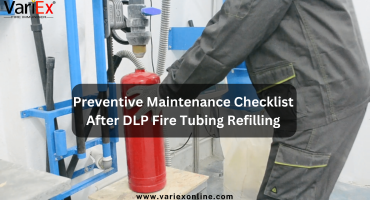 Read more +11 July 2025 in Fire Suppression
Read more +11 July 2025 in Fire Suppression

